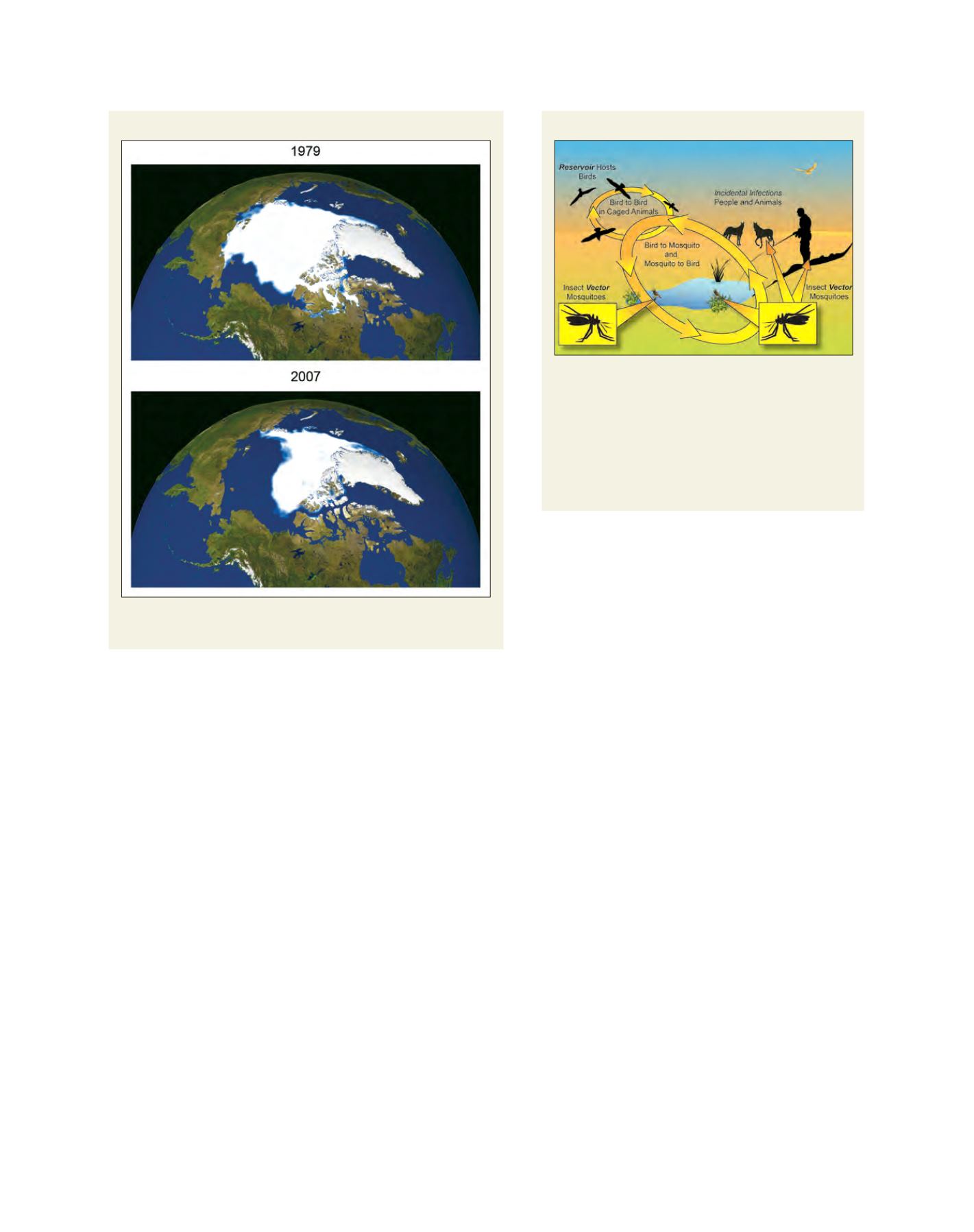

[
] 33
T
he
I
mpacts
and
I
mplications
of
C
limate
C
hange
and
V
ariability
and better methods for quantifying uncertainties are all
required to provide useful information about the poten-
tial for, and impacts of, extreme events. It is important
to recognize, however, that aspects of uncertainty at
fine scales will remain irreducible.
Expand capacity to provide relevant climate information
to decision makers and the public
– Through interactions
between information providers and users, monitoring
systems, distribution networks, and information tools
can all be developed and refined. Monitoring efforts
need to adhere to principles that ensure the quality
of observations, and improved access to data archives
will facilitate society’s ability to respond to change.
Credible climate services must provide reliable, well
documented, and easily used information. While
implementation is most important at a national scale,
many decisions and policies addressing impacts take
place regionally. Experience has demonstrated that the
practice of climate services requires sustained, ongoing
regionally-based interactions with users.
Improve understanding of thresholds for abrupt climate
changes
– Climate has shifted regimes relatively quickly
in the past, suggesting it is capable of doing so again in
the future. More needs to be learned, however, about
the tipping points that can trigger such changes. The
sensitivity of major ice sheets to sustained warming is
of concern in this regard, requiring improved observa-
tions, analysis, and modelling of ice sheets and their
interactions with surrounding oceans. Thresholds in
biological systems also need to be better understood.
Improve understanding of most effective approaches to
mitigation
– Different paths to reducing concentrations
of greenhouse gases exist, and a mixture of mitigation
‘agenda for climate impacts science’ described in a state-of-knowl-
edge report entitled Global Climate Change Impacts in the United
States published by the US Global Change Research Program.
1
It
recognizes that advances in scientific understanding have already
contributed greatly to decision making. Further advances are
required, however, to better understand and project changes in rain-
fall, storm tracks, storm intensity, heat waves, and sea-level rise.
With respect to advancing knowledge specifically about the impacts
of climate variability and change and the processes responsible,
the report makes six recommendations that would better ensure
the information provided by climate services is of use to decision
makers:
Expand understanding of climate impacts
– Increased knowledge
is needed about how ecosystems, economic systems, human health,
and the built environment will be affected by climate variability and
change in the context of multiple stresses. This will be derived from
sustained observations, field experiments, model development, and
integrated impact assessments performed through collaborations
among researchers, practitioners and stakeholders.
Refine the ability to project climate variability and change at local
scales
– Decisions on adaptation will be made largely at local and
regional scales. Although progress is being made at these scales,
significant uncertainties remain. Higher resolution models, improved
downscaling approaches, additional observations at relevant scales,
Arctic sea ice annual minimum
Arctic sea ice reaches its annual minimum in September. The satellite images show
September Arctic sea ice in 1979, the first year these data were available, and 2007
Source:
Sea Ice Yearly Minimum 1979-2007
, NASA/Goddard Space Flight Center
Scientific Visualization Studio (GSFC)
West Nile virus transmission cycle
While migratory birds were the primary mode of the West Nile virus
spread in the United States after the first outbreak occurred in 1999,
epicentres of the disease were linked to locations with either drought
or above average temperatures during the epidemic summers of
2002-2004. Analyses of a more virulent strain that emerged in
2002 indicate this strain responds strongly to higher temperatures,
suggesting that greater risks from the disease may result from
increases in the frequency of heat waves
Source: Karl et al. (2009)
















